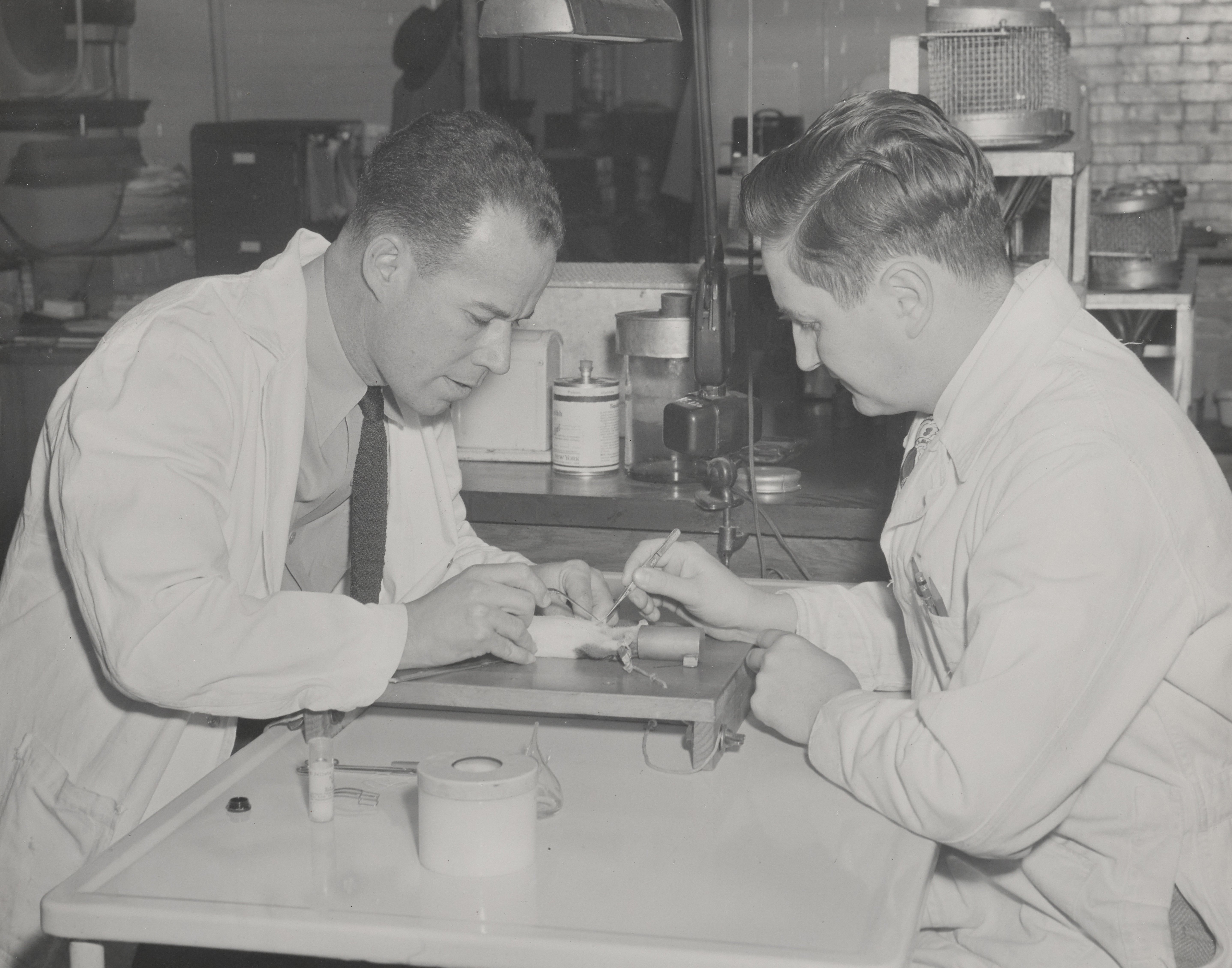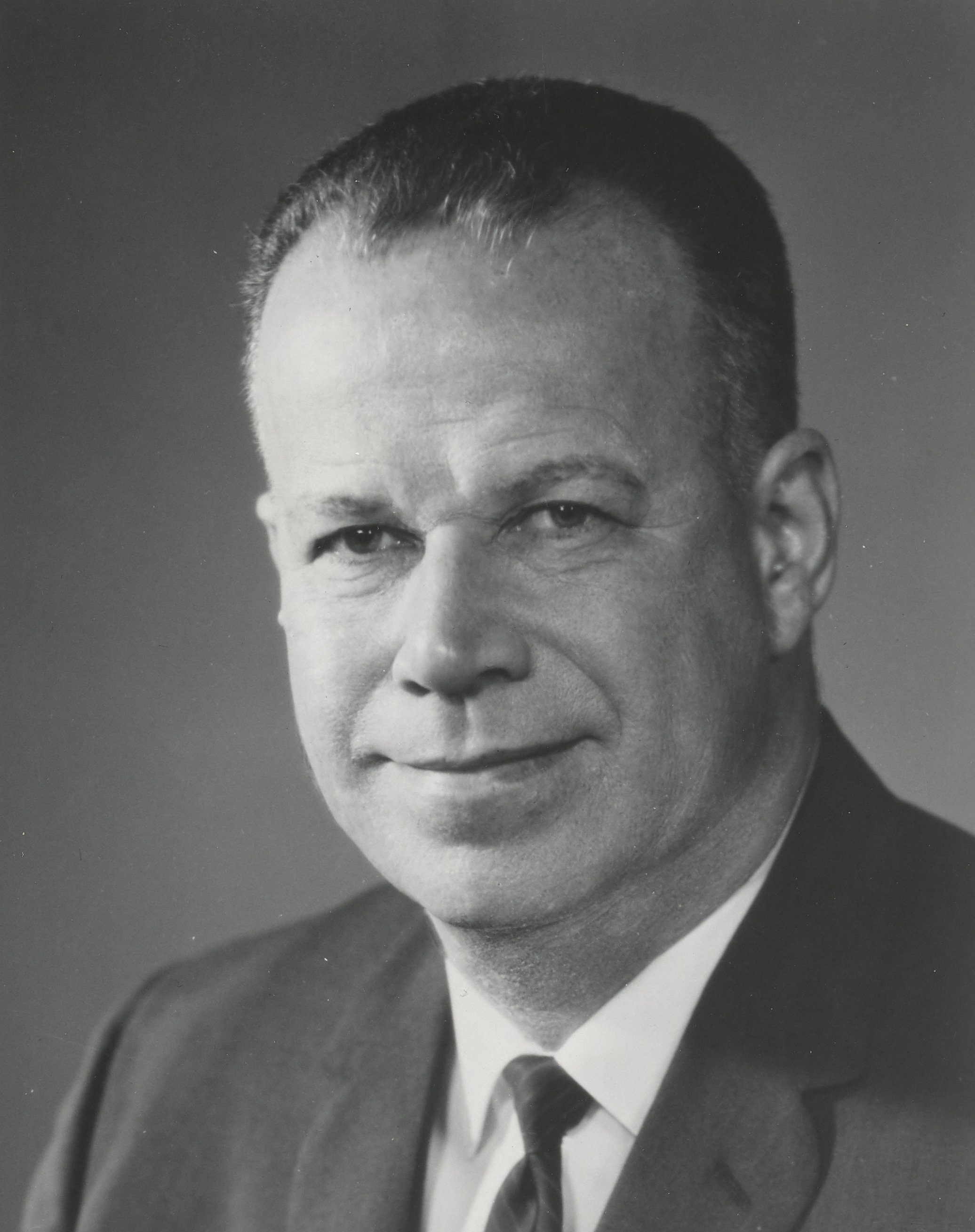First African American Appointed to SU Biology in 1948 Advocated for Diversity in Science Education
James Hope Birnie carried on his family’s legacy of leadership.

Creating opportunity for African American students in science was a lifelong commitment of James Hope Birnie, professor of zoology at Syracuse University from 1948 to 1951, who came from a family steeped in higher education. Birnie was the nephew of Dr. John Hope, the fourth president and first black president of Morehouse College in Atlanta. Birnie’s wife, Cassandra Maxwell, was the first African American woman to pass and be admitted to the South Carolina bar, and she served on the faculty of the Law School at South Carolina State University. Birnie was no exception, having a lasting effect at Syracuse University. In 1948, he became the first African American to hold a faculty position in biology, according to “Biology at Syracuse University,” (Syracuse University Press, 2012) by H. Richard Levy, former chair of the biology department.
Birnie’s appointment at Syracuse University was groundbreaking, according to George Langford, professor of biology and dean emeritus of the College of Arts and Sciences, because during the 1930’s-40’s, blacks were typically denied appointments at predominantly white institutions.
“Very small numbers of blacks were admitted into Ph.D. programs in these institutions, but the expectation was that they would return to the segregated South to teach at historically black institutions,” says Langford. “SU was ahead of its time by appointing a black scientist to its faculty.”
Birnie received a Ph.D. at Syracuse University before going on to work in the College of Arts and Sciences’ (A&S’) Department of Zoology, which later became the Department of Biology. He conducted research in endocrinology and embryology. Notably, he was one of the first biology faculty members to be supported by the National Institutes of Health (NIH). His work with water metabolism looked at how kidneys manage the amount of water in the body. He specifically studied the “antidiuretic hormone” (ADH) and published papers on the breakdown of ADH in the body. Too little ADH in a person’s blood could cause excessive urination. According to Langford, Birnie’s research in this field was pioneering at the time.

In 1948, the Department of Zoology was awarded a $12,528 grant from NIH/U.S. Public Health service for the research on "Water Metabolism and Related Metabolic Phenomena," which explored the role of endocrine glands and the liver in handling body fluids. Birnie was one of five Syracuse University investigators on the project. Based on his work in the field of endocrine factors in water and salt metabolism, he was also elected as a fellow in the New York Academy of Science.
In 1951, Birnie left Syracuse University to become chair of the biology department at Morehouse College, but in 1958 he was elected as an honorary member of the Syracuse chapter of Phi Beta Kappa, the prestigious and highly selective liberal arts and sciences honor society.
While at Morehouse College in 1959, Birnie and his wife were invited by President Dwight Eisenhower to attend a state dinner at the White House, in honor of Soviet Premier Nikita Khrushchev’s visit to the United States. Birnie’s select invitation was a testament to his contributions to science and education.
In 1962, Birnie began work at Smith, Kline & French Laboratories (SKF) in Philadelphia, a precursor of today's GlaxoSmithKline pharmaceutical company. He would work his way up through the company to become Chief of the Endocrinology Section of the company's Research and Development Division.
Even after leaving education, Birnie remained committed to promoting black student involvement in the sciences. In 1972, he was one of only around 690 black scientists in the U.S. with a Ph.D. in the basic sciences. He was determined to increase that number. While at SKF, Birnie traveled around the country, meeting with black undergraduate students to encourage them to participate in research, attend graduate school, and pursue careers in science and teaching. He contacted nearly 60 universities during his outreach, requesting fellowships and assistantships for qualified black students who could not otherwise afford graduate study. His request was met with support and eagerness to become involved by almost every school. One response from Cornell University read, “Congratulations on a long-range contribution to an immense social problem. We would be happy to cooperate in such a program.”

“Without the efforts of individuals like Professor Birnie, the number of blacks in science would be even smaller than it is today,” says Langford. “We continue today to face a shortage of blacks in STEM but Professor Birnie was a leader in this endeavor from his early days at SU until his death in 1974. Those of us who have followed in his footsteps owe a debt of gratitude to him for his efforts on our behalf.”
Today, A&S remains committed to Birnie’s vision, offering signature programs like SUSTAIN and CHANcE.
SUSTAIN, the Strategic Undergraduate STEM Talent Acceleration Initiative, provides scholarship and academic support along with professional and social experiences centered around underrepresented students in science, technology, engineering or math (STEM). The first cohort of 30 SUSTAIN scholars is now preparing to graduate in May.
The CHANcE Project, led by Langford, is an initiative to help faculty create an inclusive and culturally responsive environment in the chemistry and biology departments for students from groups underrepresented in STEM. CHANcE also helps faculty redesign their courses to incorporate active learning and authentic research experiences.
Professor James Hope Birnie’s bold push for equality in education started when he stepped on campus at Syracuse University and continued throughout his professional career. He was an outspoken advocate for underrepresented students in science, leaving a legacy of leadership that still inspires, more than 50 years later.
